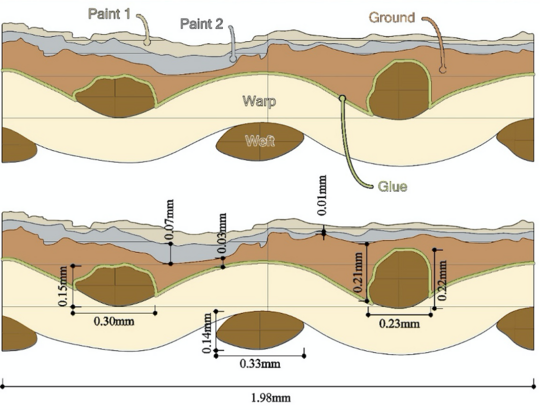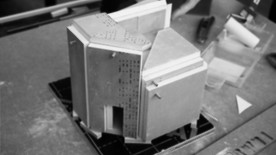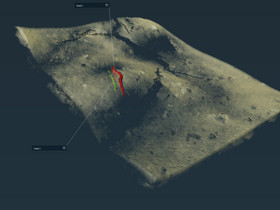
The complex task of tailoring a canvas painting degradation model
Canvas paintings consists of a complex layered structure. This is typically a canvas support, glue layer, ground layer, paint layer(s) and sometimes a varnish layer. Each of the layers consists of different materials with different mechanical properties, which make them behave differently when exposed to fluctuations in environmental conditions such as temperature and relative humidity.
Furthermore, canvas paintings are usually mounted on a wooden stretcher, which again holds other mechanical and structural properties and different geometrical dimensions. The way the canvas is fixed to the stretcher (e.g., by staples or nails) is another factor that adds to the complexity of the canvas painting as a whole.
Overall, this is the complexity that the degradation model, which is being developed at the Royal Danish Academy, has to deal with.
In the work of tailoring the degradation model we try to address what the most significant parameters are, and how we can prioritize those. There already exists some degradation models of canvas paintings. The first was developed by senior research scientist Marion F. Mecklenburg (Smithsonian Institution, USA) in 1980s and 1990s. In collaboration with Mecklenburg, we have replicated this model and are now progressing from this model by working on a more refined and detailed model, for example by including the influence of the stretcher on the stress distribution and crack pattern in canvas paintings, and by studying the micro cracks that we cannot yet see, but that might develop into visual surface cracks in the future.
The model is used to run a parametric study, where we test what difference it makes when different paint types, layer structure, layer thickness, format etc. are used. This is done based on extensive tests of paints and other materials, many of which were performed by Mecklenburg.
In the end, the complex simulation of canvas paintings is to be translated into a simple mathematically equation, that can be used in the CollectionCare system to analyze data from the sensor nodes mounted on the artworks.
Reference to Mecklenburg’s model:
Mecklenburg, M.F., McCormick-Goodhart, M. & Tumosa, C.S. (1994). Investigation into the deterioration of paintings and photographs using computerized modeling of stress development. Journal of the American Institute for Conservation, vol. 33, no. 2, article 7. (P. 153-170)






















